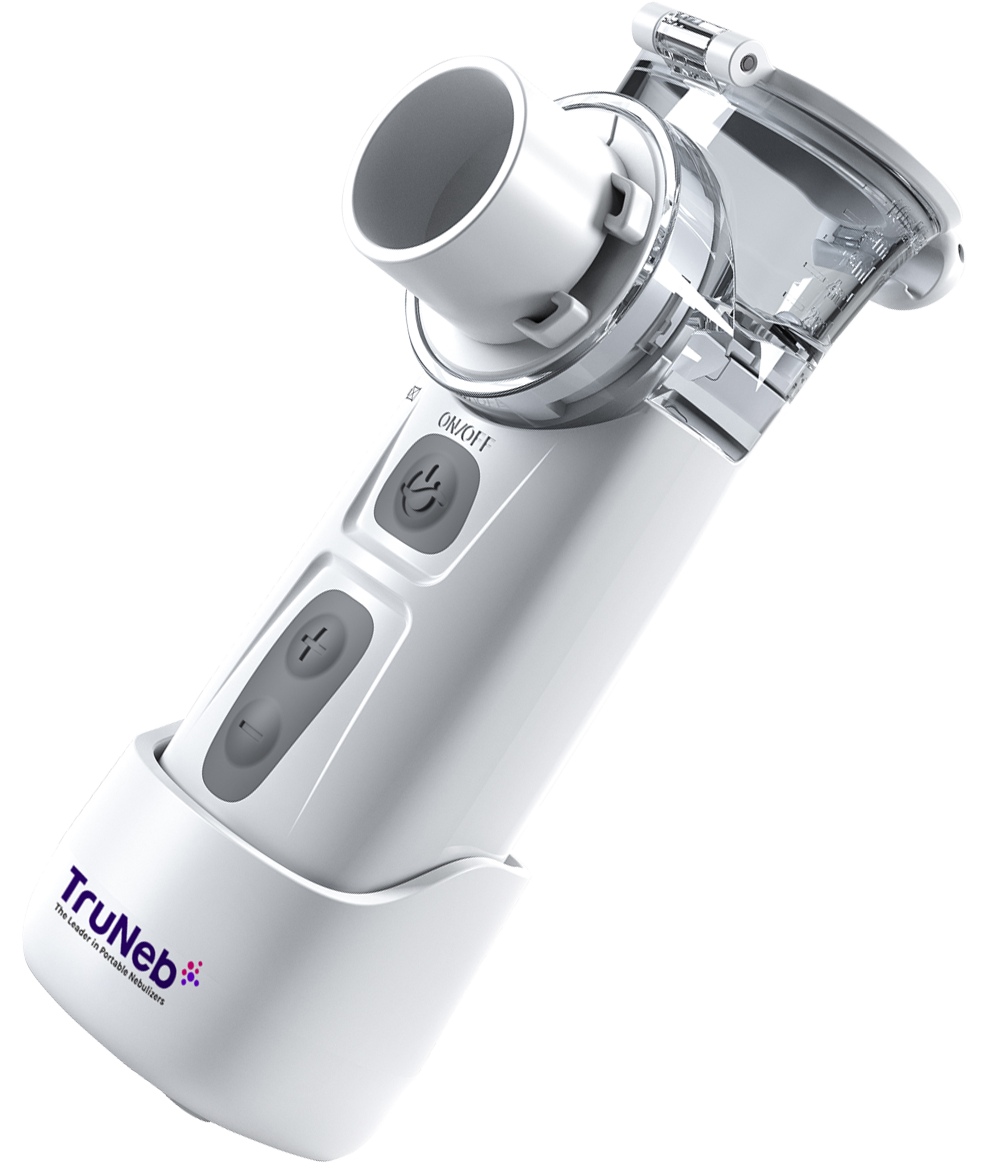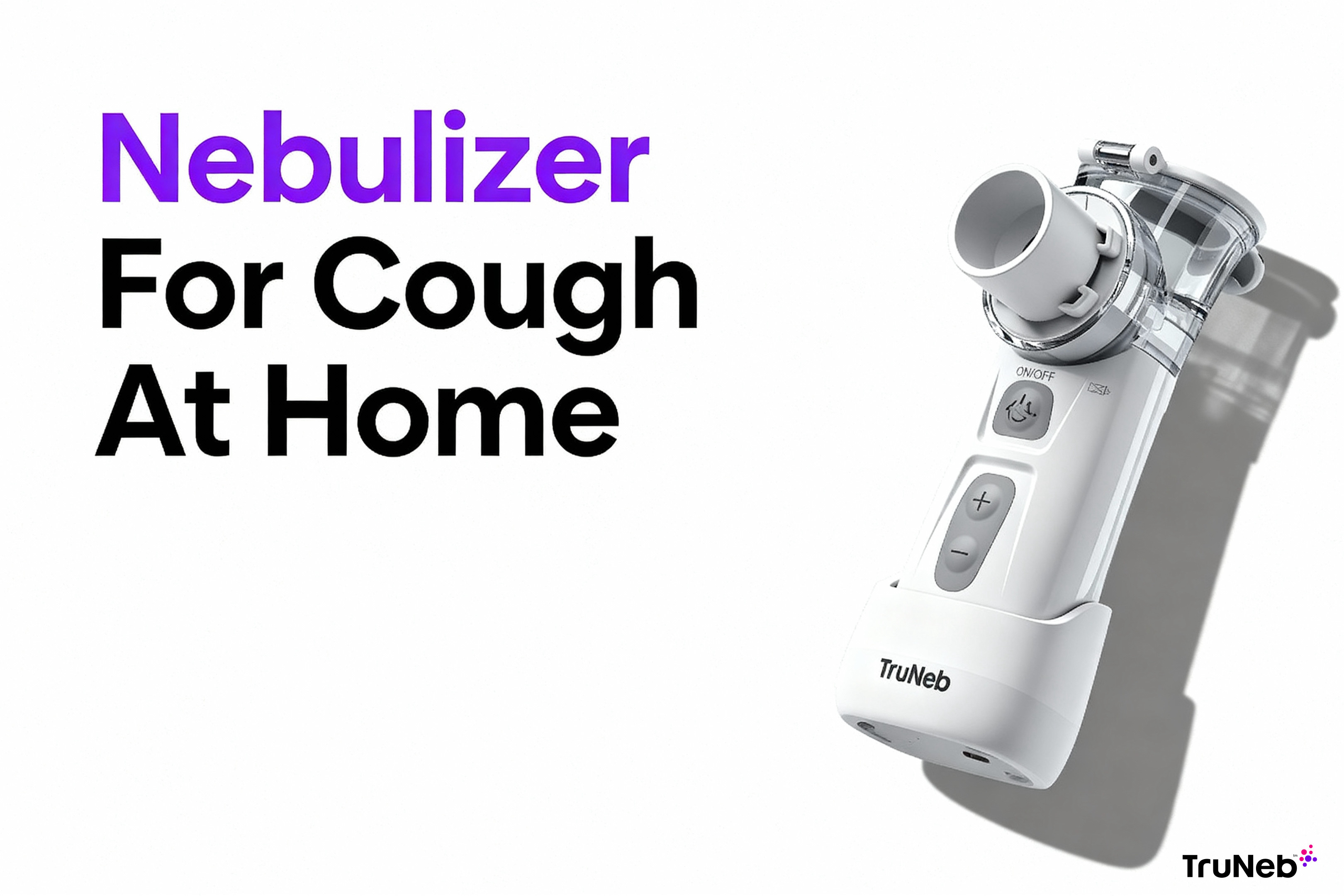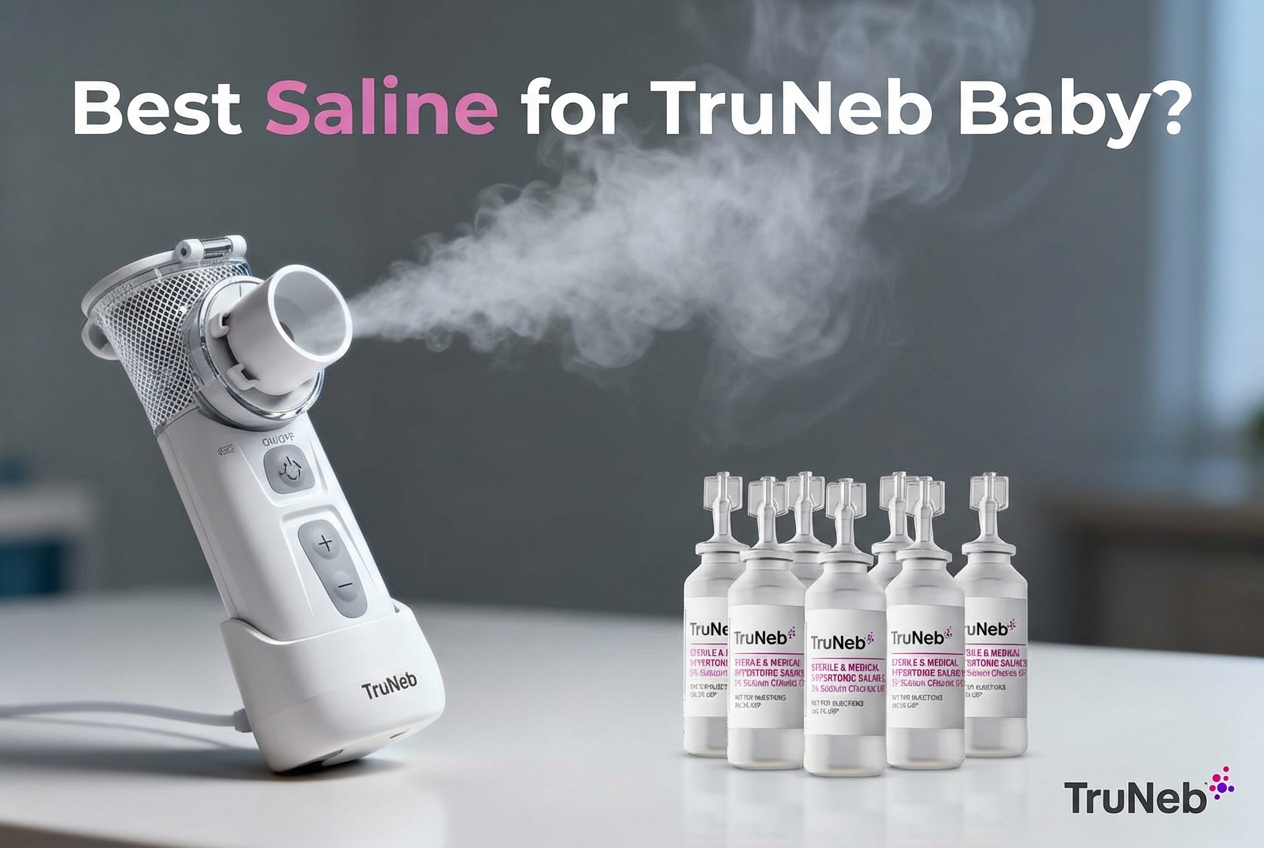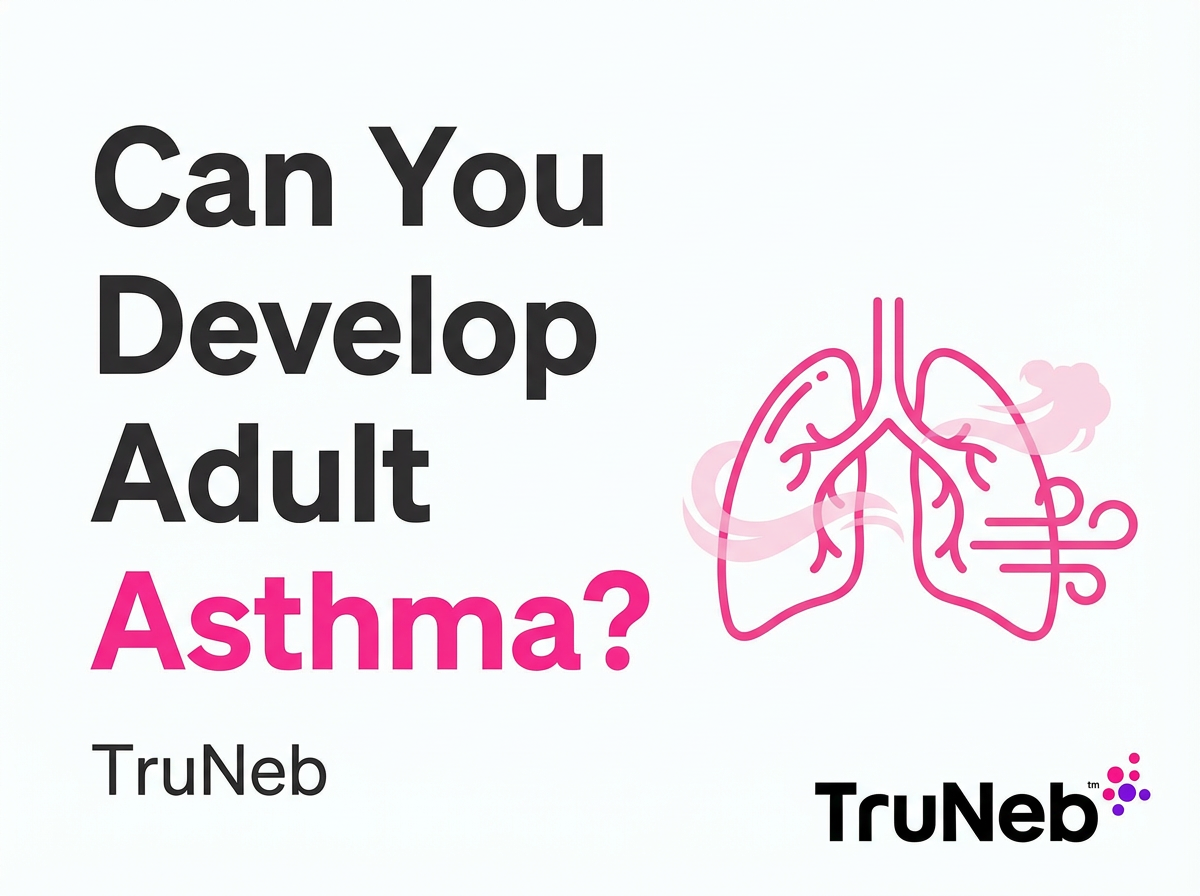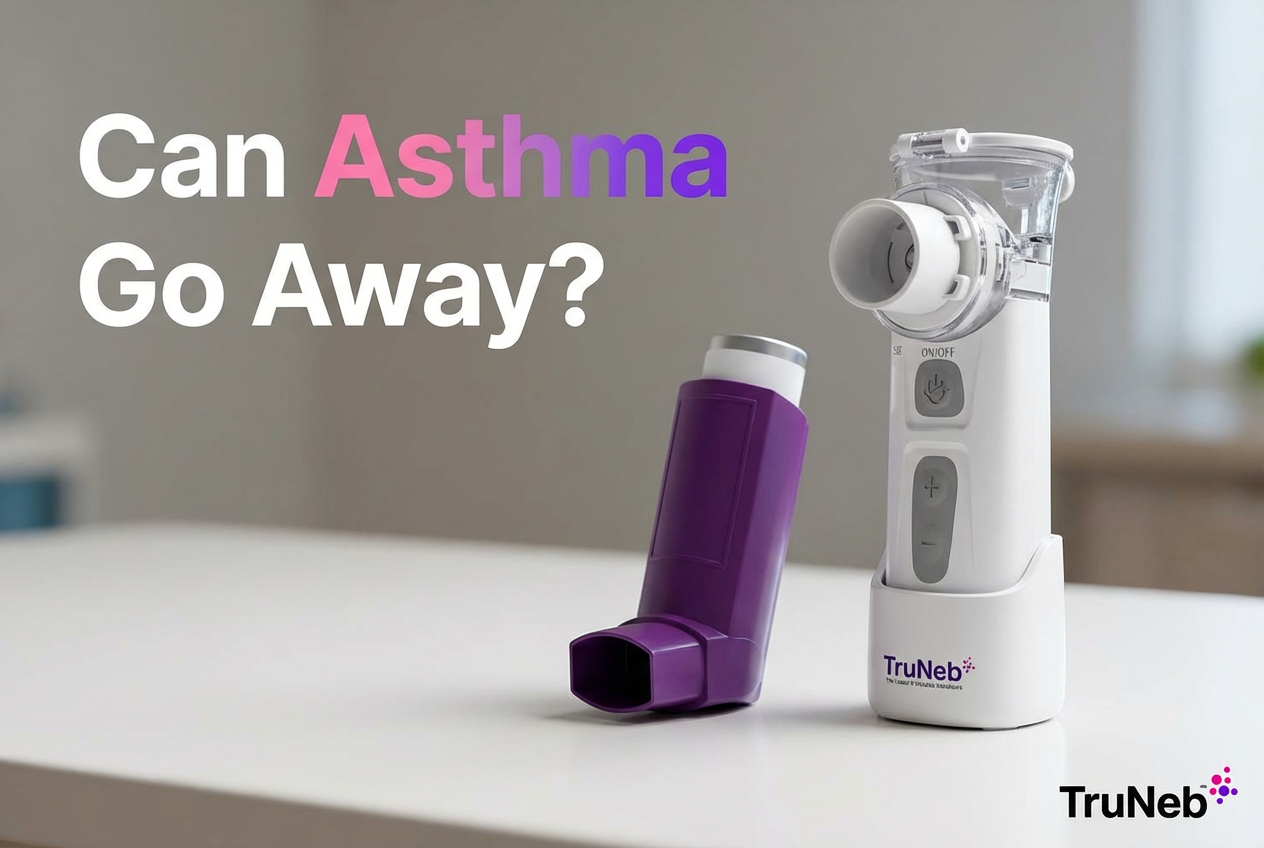On this page

A nebulizer can help some infant coughs, especially with wheeze or chest congestion, by turning medicine or sterile saline into a mist your baby breathes. It’s not needed for every cough, and doctors usually guide if and when to use it.
Most infant coughs come from viral colds and improve with time and home care. Current guidance from groups like the American Academy of Pediatrics (AAP) stresses supportive care for mild bronchiolitis; a nebulizer is used when there is wheeze, labored breathing, or a doctor’s plan.
Rule of thumb: nebulizers help most when the cough is tied to tight, swollen airways or heavy mucus, not a simple stuffy nose.
When Is a Nebulizer Recommended for an Infant’s Cough?
Doctors recommend nebulizers for babies when breathing trouble goes beyond a basic cold. Common scenarios include:
- Wheezing with bronchiolitis (usually from RSV). Supportive care comes first. Some doctors use saline nebulization to help move mucus in selected cases.
- Reactive airways or asthma-like episodes. Your doctor can prescribe a bronchodilator (like albuterol) via nebulizer to relax tight airway muscles.
- Severe croup with stridor. In the ER, doctors sometimes use nebulized epinephrine for short-term relief. This is hospital care, not a home treatment.
Not usually recommended: mild runny-nose coughs or nighttime coughs from post-nasal drip. Home care like humidified air and saline nose drops typically helps more.
⚠️ Seek emergency care if your baby has fast breathing, ribs pulling in, blue or gray lips/skin, pauses in breathing, poor feeding, fewer wet diapers, or seems very drowsy.
Use a nebulizer for infant cough only when a doctor identifies wheeze, significant chest congestion, or a condition that responds to inhaled therapy.
Use this quick chart to see common scenarios and the typical role of a nebulizer.
| Condition | Common signs | Typical nebulizer role |
|---|---|---|
| RSV/bronchiolitis | Wheeze, fast breathing, chest congestion | Supportive care first; some clinicians use saline nebulization in select cases1 |
| Reactive airways/asthma-like episode | Wheeze, chest tightness | Doctor may prescribe albuterol via nebulizer to open airways |
| Croup (moderate to severe) | Barky cough, stridor | ER use of nebulized epinephrine for short-term relief2 |
| Common cold with stuffy nose | Runny nose, mild cough | Usually no nebulizer; emphasize humidifier and saline nose drops |
Notes: 1) Saline is sometimes used to help mucus clearance; pediatric guidance prioritizes supportive care. 2) Nebulized epinephrine is hospital-only and not a home treatment.
This quick view helps you match symptoms with typical treatment paths. Your pediatrician’s advice guides the plan.
Hospital-only treatments (like nebulized epinephrine) are not a home remedy.
How to Use a Nebulizer for an Infant – Step-by-Step Guide
- Prepare the device. Wash your hands. If your pediatrician prescribed a solution (medicine or sterile saline), place it in the medicine cup. If you’re using a TruNeb™ portable mesh nebulizer, make sure it’s charged.
- Attach the infant mask. Some mesh devices offer a pacifier-style attachment, which can help babies who don’t like a face mask.
- Position your baby. Hold your baby upright on your lap. Keep things calm with a favorite song, book, or gentle rocking.
- Start the treatment. Turn the nebulizer on and place the mask snugly over the nose and mouth. If your baby is crying hard, pause and soothe—crying reduces how much mist reaches the lungs. Don’t force the mask; pause, soothe, and resume.
- Most sessions run about 5–10 minutes; follow your device’s manual or your doctor’s plan. You’ll know it’s done when the cup is empty or the mist slows.
- After the session. Turn off the device. Wipe your baby’s face if damp. Note any changes in breathing or behavior to share with your pediatrician.
Pro tip: a quiet portable nebulizer like TruNeb can make treatments easier during naps.
One-liner: Calm baby, a snug mask, and steady breathing make each treatment count.
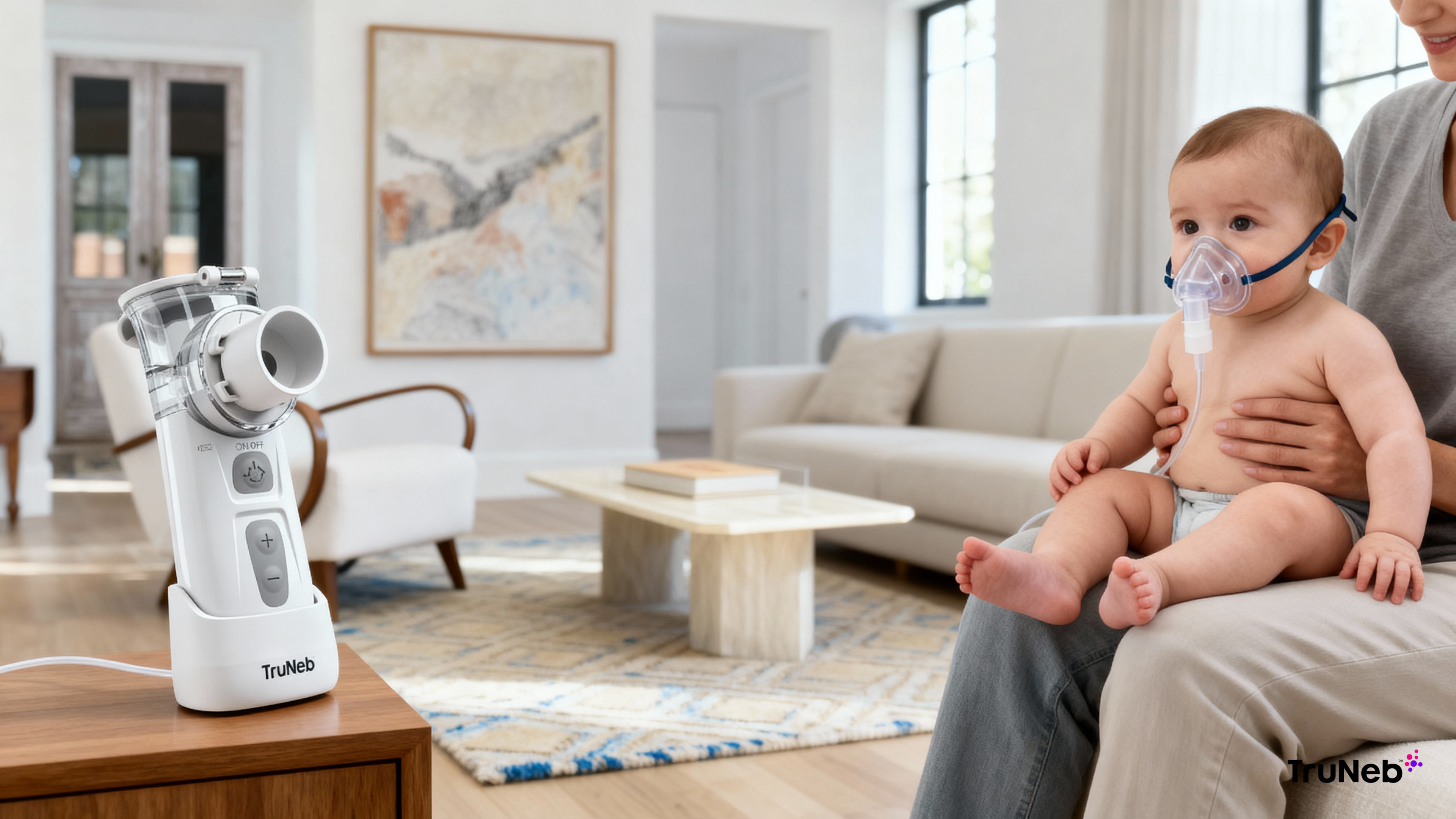
Nebulizer Solutions for Babies – Saline vs Medication
Saline Solutions
- 0.9% saline (isotonic) is sterile saltwater that moistens airways and helps loosen mucus. It’s drug-free and commonly used to ease congestion.
- Hypertonic saline (3% or 7%) draws water into the airways and helps clear thick mucus in some infants with bronchiolitis. It is used under medical supervision and can cause a brief cough. Use only prefilled sterile vials labeled for nebulizers—never homemade saline.
- Compressor and mesh nebulizers can deliver saline or prescribed meds; mesh units are quieter and portable, which can help with infants.
- Steam inhalers are not nebulizers and should not be used to deliver breathing medications.
- TruNeb offers sterile saline vials compatible with portable mesh nebulizers.
Medications
- Bronchodilators (like albuterol) relax airway muscles during wheeze. Mild jitteriness or a faster heartbeat can happen briefly.
- In select cases, other inhaled meds (like budesonide) are prescribed by a doctor. For severe croup in the ER, doctors sometimes use nebulized epinephrine.
Only use solutions your pediatrician recommends.
Saline helps loosen mucus and moisturize airways; medications are for wheeze or inflammation—use either only as directed by your doctor.
| Solution | What it does | Common use | Notes |
|---|---|---|---|
| 0.9% saline | Moistens airways, thins mucus | Mild congestion, comfort | Drug-free; use sterile vials |
| 3%/7% saline | Pulls water into airway to move mucus | Bronchiolitis support | Use under medical supervision; may prompt brief cough |
| Albuterol | Relaxes airway muscles | Wheeze/reactive airways | Prescription; may cause jitteriness/fast heartbeat |
| Others (e.g., budesonide) | Reduces airway inflammation | Specific diagnoses | Prescription; follow your doctor’s plan |
Use only sterile products made for nebulizers—never homemade mixtures.
Nebulizer Safety: Precautions, Cleaning, and Side Effects
Cleaning & Care
- After each use: wash the mask and medicine cup with warm soapy water, rinse well, and air-dry.
- Daily or per the manual: disinfect parts (for example, a vinegar-water soak), then rinse and air-dry.
- Don’t wash or submerge electronic parts; wipe them with a damp cloth. Replace filters on compressor units as directed.
During Use
- Always supervise your baby. Keep cords away from little hands.
- Use only solutions your pediatrician recommends.
- If your baby cries hard, pause and soothe so the mist actually reaches the lungs.
- Don’t force the mask; pause, soothe, and resume.
- Never add essential oils or homemade liquids.
- Stop the session and call your doctor if your baby seems more distressed, develops a rash, vomits, or you’re worried about a reaction.
- ⚠️ Seek emergency care if your baby has fast breathing, ribs pulling in, blue or gray lips/skin, pauses in breathing, poor feeding, fewer wet diapers, or seems very drowsy.
Side Effects
- Saline: usually none beyond brief coughs or sneezes.
- Medications (like albuterol): can cause mild jitteriness or a faster heartbeat that fades.
Don’t give OTC cough or cold medicines to children under 2 unless your doctor tells you to.
Clean parts after every use and supervise your baby so treatments stay safe and effective.
Consumer warning: You might see boxes labeled 'steam inhaler'—these are NOT for breathing medications. Steam inhalers heat water to make warm vapor; nebulizers turn medicine or sterile saline into a fine mist for the lungs.
Alternatives to Nebulizer Treatment for Infant Cough
- Cool-mist humidifier: keeps room air moist so irritated airways feel better. Clean it regularly to prevent mold.
- Steamy bathroom: sit with your baby just outside a warm, steamy bathroom for about 10 minutes to loosen mucus. Keep baby away from hot water to prevent burns.
- Saline nose drops and suction: clear nasal mucus to reduce post-nasal drip coughs.
- Hydration and comfort: frequent feeds and calm cuddles help thin mucus and settle coughs.
Comparison tip: a humidifier runs for hours to ease dryness; a nebulizer delivers a short, targeted mist (saline or medicine) into the lungs when your doctor recommends it.
Frequently Asked Questions
Tap or click a question below to see the answer:
Yes—use only sterile 0.9% saline unless your pediatrician prescribes a medicine. Do not add oils or homemade liquids.
Follow your doctor’s plan for timing and frequency. If the schedule isn’t helping, check back with your doctor.
They do different jobs. A humidifier moistens room air for comfort. A nebulizer gives a short, targeted mist (saline or medicine) into the lungs for wheeze or heavy mucus when prescribed.
There’s no strict lower age limit. Even young infants can receive nebulized therapy under medical supervision. Use an infant-sized mask and proper technique.
You can buy many nebulizer devices without a prescription. The medications (and some saline strengths) for infants are prescription-only. Ask your pediatrician what to use.
No. Steam inhalers heat water to make warm vapor for the nose and sinuses, while nebulizers turn medicine or sterile saline into a fine mist for the lungs.
Disclaimer: This article is for informational purposes only and isn’t a substitute for medical advice. Always talk with your doctor about your baby’s symptoms and treatments.

